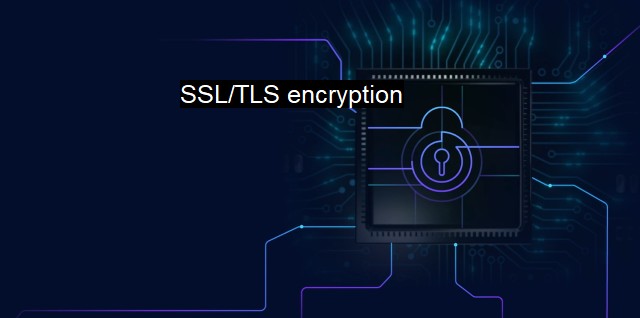What is SSL/TLS encryption?
SSL/TLS Encryption and Its Role in Cybersecurity and Antivirus Protection: Exploring the Fundamentals of Secure Online Communication
SSL (Secure Sockets Layer) and TLS (Transport Layer Security) are cryptographic protocols designed to provide enhanced security for communications over networks. They play a pivotal role in cybersecurity as they protect sensitive information, like credit card numbers, login credentials or even personal data from falling into the wrong hands.SSL was the first widely adopted security protocol on the web. after being implemented in many systems, vulnerabilities were discovered that potentially allowed unauthorized individuals to gain access to data. To address the flaws associated with SSL, TLS was developed.
TLS is an upgraded version of SSL as it provides more robust protection. Despite the two varying somewhat, the goal they serve in ensuring data privacy and integrity remains the same. Hence, they are often referred to interchangeably as SSL/TLS encryption.
SSL/TLS encryption operates by securing an encrypted link between a web server and a client—typically a web server and a browser, or a mail server and a mail client. This link ensures that all data transmitted remains private and integral, keeping it secure from eavesdroppers or 'man-in-the-middle' attacks.
To help visualize, when you visit a website using SSL/TLS encryption, the software in your browser (the client) and the server hosting the website will share public and private 'keys'. The public keys open a lock and are made available to everyone. The private keys, which are kept secret, can only open a lock in conjunction with the right public key. The combination of public and private keys secures the connection from any third party interference.
The keys work together to set up a secure channel of communication. Once a secure connection is established, user data sent from the client machine to the server (and vice versa) is scrambled into a code that cannot be understood by unauthorized parties. Any computational attempt to decrypt this without the right key is near impossible.
In reality, SSL/TLS encryption protocols feature in our everyday web browsing without us realizing it. Every time you see 'HTTPS' (as against 'HTTP') and a padlock icon in your browser’s address bar, you can rest assured that SSL/TLS encryption is at work, and the information you send to the site will be secure.
In relation to antivirus software, SSL/TLS encryption assists by handling file transfers and updates securely. It ensures that updates or any shared document is encrypted and safe from malicious intents like injection of harmful scripts or exploitation of exposed weaknesses during transmission.
Some top-tier antivirus solutions implement their own SSL/TLS scanning capabilities to analyze SSL/TLS encrypted traffic for possible cyber threats. These features are specifically designed to detect malware or other threats that might be attempting to conceal themselves in encrypted traffic.
SSL/TLS encryption is a backbone of Internet security. Its contribution to encryption technology and data protection has redefined cybersecurity norms across the globe. It not only enhances hitherto lax data security protocols in organizations but also protects individual users from becoming victims of cyber-attacks while innocently engaging in online activities. Internet users can rest assured knowing that SSL/TLS encryption safeguards their personal and financial information from cyber criminals or third-party snoopers. It is one potent weapon in the cybersecurity arsenal that with proper use can significantly reduce the risk of cyber threats.

SSL/TLS encryption FAQs
What is SSL/TLS encryption?
SSL/TLS encryption is a security protocol used to protect data transmitted over the internet. It creates a secure connection between a client (such as a web browser) and a server, ensuring that any information transmitted between the two is encrypted and cannot be intercepted by unauthorized parties.Why is SSL/TLS encryption important in cybersecurity?
SSL/TLS encryption is important in cybersecurity because it ensures that sensitive information, such as passwords and credit card numbers, is protected when transmitted over the internet. Without encryption, this information could be intercepted and used by malicious actors for fraudulent purposes.How does antivirus software interact with SSL/TLS encryption?
Antivirus software can interact with SSL/TLS encryption in a few different ways. Some antivirus programs use SSL/TLS to establish a secure connection between the software and the server, ensuring that any updates or downloads are secure. Others may scan encrypted traffic for malware or other threats, looking for patterns or anomalies in the data that could indicate an attack.What are some common vulnerabilities in SSL/TLS encryption?
Some common vulnerabilities in SSL/TLS encryption include outdated or weak encryption protocols, incorrect configurations, and unpatched vulnerabilities in the software used to implement the protocol. Attackers can exploit these vulnerabilities to intercept or decrypt encrypted traffic, potentially exposing sensitive information to risk.| | A | | | B | | | C | | | D | | | E | | | F | | | G | | | H | | | I | | | J | | | K | | | L | | | M | |
| | N | | | O | | | P | | | Q | | | R | | | S | | | T | | | U | | | V | | | W | | | X | | | Y | | | Z | |
| | 1 | | | 2 | | | 3 | | | 4 | | | 7 | | | 8 | | |||||||